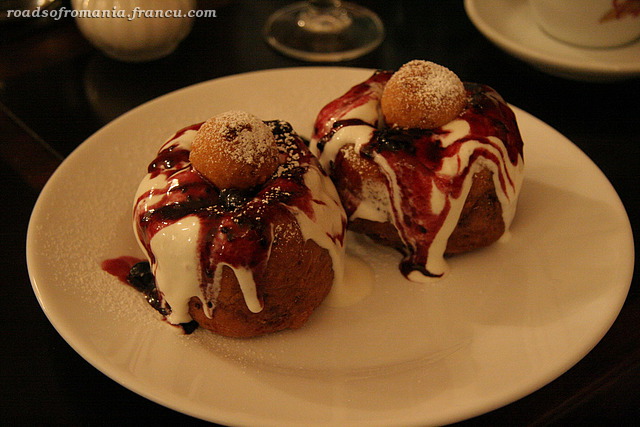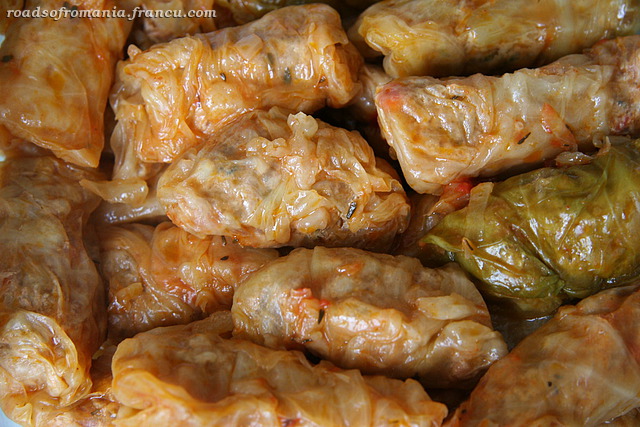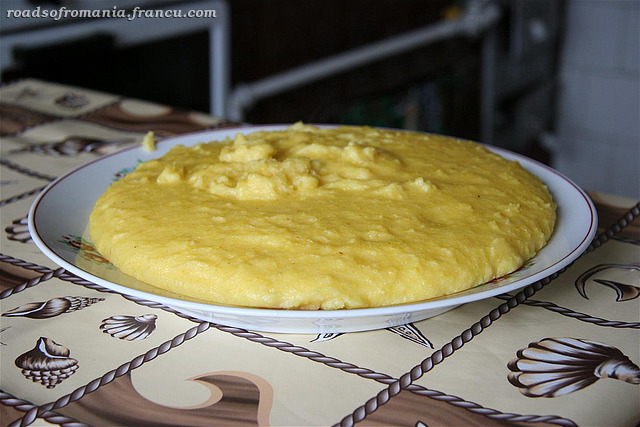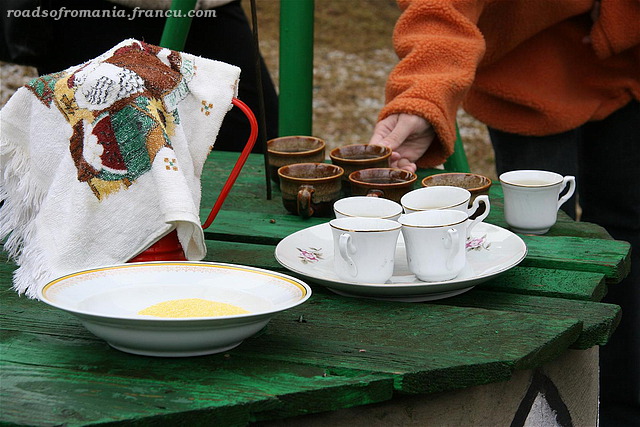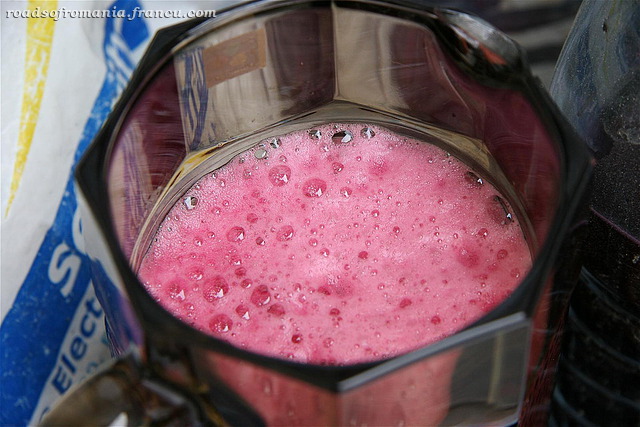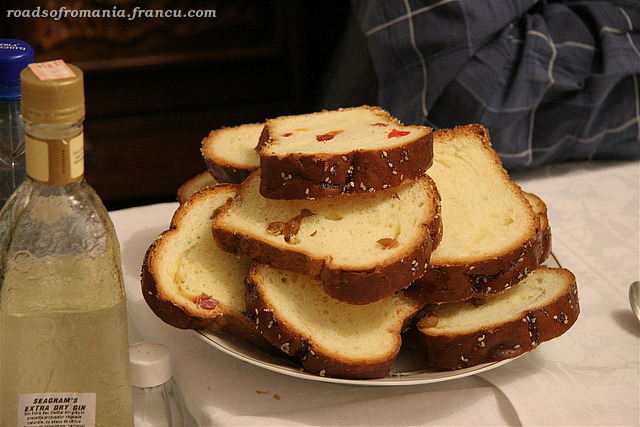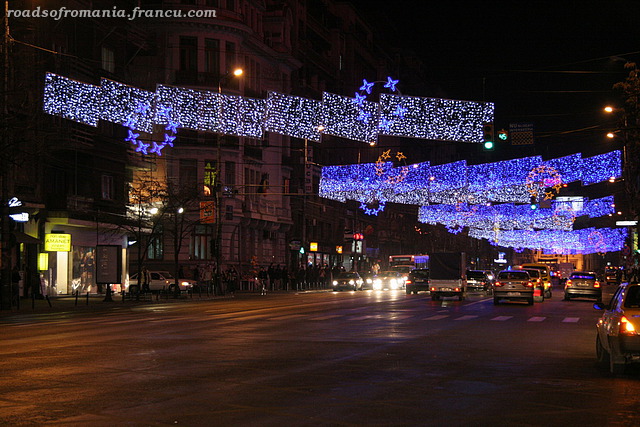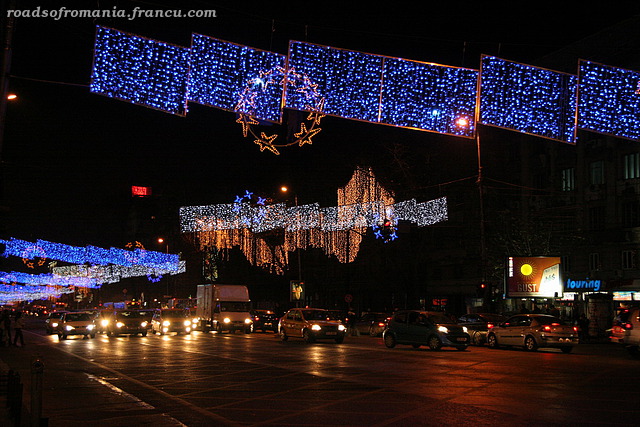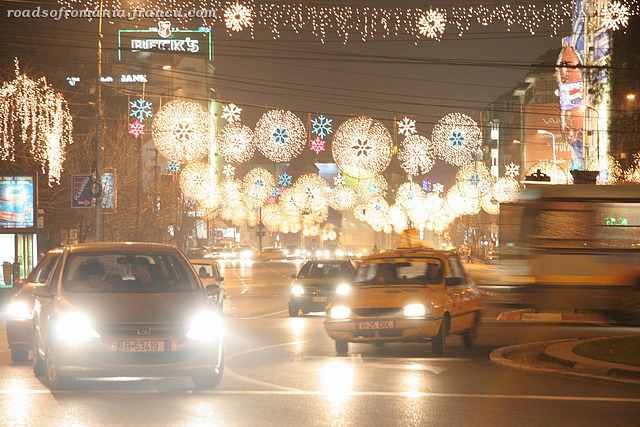And since we’re on the subject of food, look what I indulged myself with last evening. Papanasi, a traditional Romanian dessert, are fried cheese-filled pastries similar to doughnuts, served with a dollop of jam and sweetened sour cream. You can find them at many restaurants in Bucharest.
I came up with a new business idea, to sell t-shirts and bumper stickers with the slogan “I survived the holiday season in Romania”. It was that bad, really 🙂 I’ve never seen so much food in my life. Romanians like to eat a lot on holidays, especially after a month of Christmas fasting. I was talking to a guy who lived in France for the last 20 years and he was in owe: “You come here, people seem poor. You go to visit them for some casual lunch or dinner and they set up a table like they’re throwing a wedding reception. I’ve never seen so much food, maybe except for US” he said. That’s the way it is in Romania. People like to feed their guests until they’re about to pop. On holidays it’s worse 🙂 Everyone cooks the traditional dishes. You get invited to ten meals in three days, and in every house you have to taste the cooking. The moment you enter the door you are asked “Would you like to eat something?” and no matter of the answer you will be served something even though you just ate two hours ago. You end up eating a lot more than you want. You have to do it, otherwise the hosts get upset. Nothing gets wasted or thrown away. And so I did eat a lot. Since I don’t cook the traditional dishes while I’m in California this was my occasion to try them and I didn’t refuse anything that was offered. I’ll probably have to diet when I return to California.
Traditional goodies
The dish considered the most traditional is sarmale, cabbage leaves stuffed with rice, meat and herbs usually served with sour cream and with mamaliga, a cornmeal similar to polenta (many of our neighbours like Serbia or Bulgaria have sarmale too but the serving with polenta is I believe truly Romanian)
The traditional drink is tuica, a strong brandy made of plums. If it’s twice distilled than we get the much stronger palinca (a term we can’t use anymore since it became a Hungarian brand)
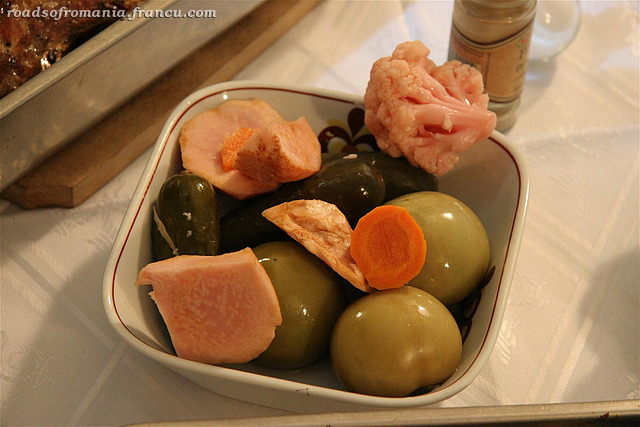
In the end some dessert, a traditional cake that people bake for Christmas or Easter called cozonac
The Christmas decorations in downtown Bucharest come in blue, white and yellow this year. Especially blue. First time I saw them I asked – without giving it much thought – why did they use blue? Christmas is supposed to be red and green. Last year the lights were mostly white and two years ago they were also white and blue. Is the city hall fixated on white and blue? My brother told me the lights are celebrating Romania’s entry into EU which will take place January 1, 2007. Duh. This year they have a reason for the blue 🙂 Afterwards I noticed that the decorations lining Magheru Boulevard, between Universitate Square and Romană Square, even display a round circle made of stars that has been the mark of the EU for so many years.
Yes, it’s true. Romania will join the EU starting January 1, 2007. It’s not my place to say if we’re ready for this step or not. Others have done it for me and the subject has been debated in great detail. From my part I hope that joining the EU will bring more political stability for my country, the pressure to accelerate the reforms, a raise in foreign investments and hopefully some curbing of the corruption that has engulfed Romania since the fall of the communism in 1989. I realize that these are all long term goals and that we might not see any changes for many years other than an increase in the freedom to travel and maybe an easiness in doing commerce. I guess the end goal – aside from political stability which to me will be the greatest achievement – will be economic growth for Romania and with it a raise in the standard of living of the population.
This year’s decoration
